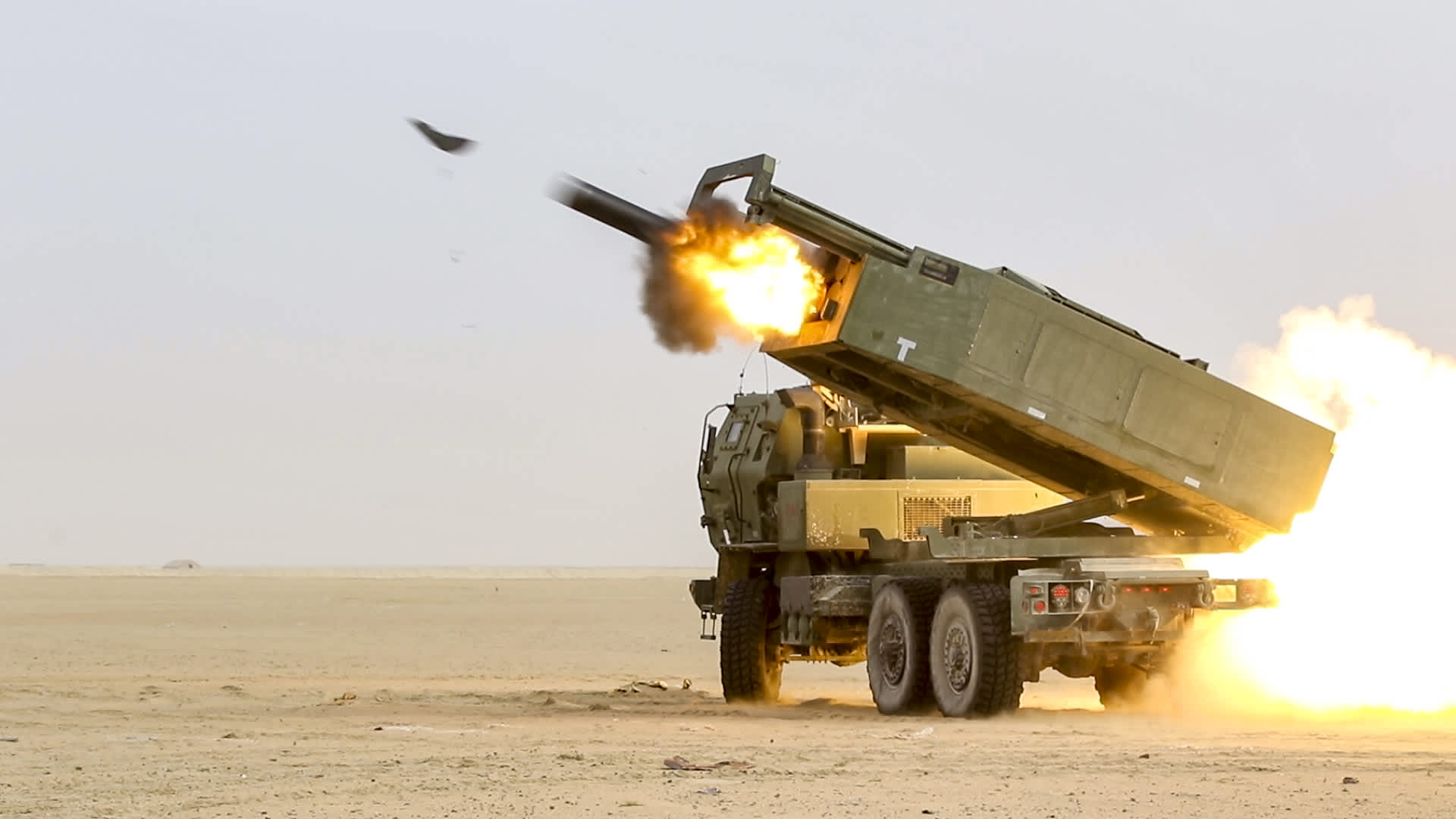US Markets
Friday, June 17th, 2022 10:45 am EDT

WASHINGTON — From heavy artillery to tactical drones to armored vehicles, the U.S. has committed $5.6 billion in military aid to Ukraine since Russia invaded in late February.
The latest assistance package of $1 billion, which is the 12th installment of aid, comes as Russian forces ramp up their fight in eastern and southern Ukraine.
The Pentagon said that the latest tranche of weapons announced on Wednesday is valued at $350 million. It includes 18 155 mm howitzers, 36,000 rounds of 155 mm ammunition,18 tactical vehicles to tow 155 mm howitzers, ammunition for High Mobility Artillery Rocket Systems, or HMARS, as well as four tactical vehicles to recover equipment and spare parts.
The Pentagon will also provide two Harpoon coastal defense systems, thousands of secure radios and night vision and thermal devices, along with funding for training and maintenance support. That aid is collectively valued at $650 million.
Here’s a look at the weapons the U.S. has committed to the fight thus far.
Heavy artillery
Heavy artillery platforms sit high on Ukrainian military wish lists. To date, the Pentagon has transferred 126 155 mm howitzer artillery systems from U.S. Army and U.S. Marine Corps stockpiles to Ukrainian forces.
Ukrainian troops will have to train alongside U.S. forces before they operate the howitzers. The Pentagon has previously said that the training will take place in a location outside of Ukraine, but near the country.
Along with the howitzers, the U.S. has also sent approximately 260,000 artillery rounds.
The Pentagon has also committed the High Mobility Artillery Rocket Systems, or HMARS, manufactured by defense giant Lockheed Martin. The HMARS are designed to shoot a variety of missiles from a mobile 5-ton truck.
Drones
The U.S. has also committed at least 700 Switchblade drones manufactured by U.S.-based firm AeroVironment. There are two variants of the weapon, the Switchblade 300 and 600. It was not immediately clear which version the U.S. deployed to Ukraine.
Each Switchblade is designed to be a single-use, or “kamikaze,” drone.
The 300 variant is designed to strike small targets. It can fit in a rucksack, weighs a little over 5 pounds and has a range of 10 miles. The 600 version of the weapon is designed to destroy tanks and other armored vehicles. It weighs slightly more than 120 pounds and has a range of more than 40 miles.
The Pentagon has also committed the Puma unmanned aerial system, or UAS, as well as 121 tactical unmanned aerial systems dubbed “Phoenix Ghost” drones.
In April, then-Pentagon spokesman John Kirby said those drones were “rapidly developed by the Air Force, in response, specifically to Ukrainian requirements.”
“It provides similar capabilities to the Switchblade series of unmanned systems, similar capabilities but not exact. There are other differences in the scope of capability for the Phoenix Ghosts, but I’m just not going to be able to get into more detail about those capabilities right now,” Kirby said during an April 21 press briefing.
The drones are manufactured by Aevex Aerospace in Solana Beach, California, and are currently in the U.S. Air Force arsenal. Once the drones are in the region, U.S. troops will train Ukrainian forces on how to operate them.
Armored and tactical vehicles
The U.S. has committed hundreds of armored vehicles to Ukrainian forces, including 200 M113 armored vehicles and hundreds of armored high-mobility multipurpose wheeled vehicles.
The Pentagon has also allocated more than 100 tactical vehicles to tow U.S Army and U.S. Marine Corps 155 mm howitzers around the battlefield. The military has also sent nearly 20 other tactical vehicles used to help recover equipment.
Aircraft and radars
The U.S. has agreed to send 20 Mi-17 Russian military helicopters. Some of those were once slated to join Afghanistan’s military fleet before the stunning Taliban takeover of the country.
The Mi-17s are personnel transport helicopters that can be armed with cannons and rockets to perform attack or close air-support roles.
The U.S. military has also committed 22 of the highly mobile AN/TPQ-36 counter-artillery radars. This radar system is capable of locating mortars, artillery and rockets within a short range. The Pentagon has also sent four counter-mortar radars.
Four Raytheon AN/MPQ-64 Sentinel air surveillance radars have also joined the fight in Ukraine. The Sentinel system is designed to alert front-line air defense weapons whenever it catches a glimpse of hostile planes, helicopters, drones or missiles. The U.S. has also included electronic jamming equipment.
Missiles and other anti-armor systems
Javelin portable anti-armor weapons also sit high on the Ukrainian military’s list. To date, the U.S. has transferred more than 6,500 Javelins, which are co-produced by defense giants Lockheed Martin and Raytheon, to the Ukrainian government.
In addition, the U.S. has committed more than 1,400 Stinger anti-aircraft missile systems to Ukraine. It has also sent more than 20,000 portable anti-armor systems and other laser-guided rocket systems.
Guns and ammunition
The Pentagon has transferred more than 7,000 various types of small arms and 50 million rounds of ammunition to Ukraine.
The U.S. has also dedicated more than 1 million grenades, mortars and artillery rounds.
Protective equipment
The U.S. has so far sent more than 75,000 sets of body armor and helmets to Ukrainian forces, according to figures provided by the Pentagon.
In addition, the U.S. has also equipped Ukrainian troops with thousands of night vision devices, thermal imagery systems and other forms of militarized optics.
The U.S. has also included medical supplies and equipment used to aid in combat evacuations. In addition, hundreds of chemical, biological, radiological and nuclear protective equipment pieces have also left U.S. stockpiles for Ukraine.
This post has been syndicated from a third-party source. View the original article here.




